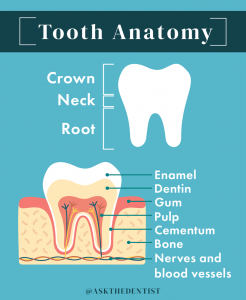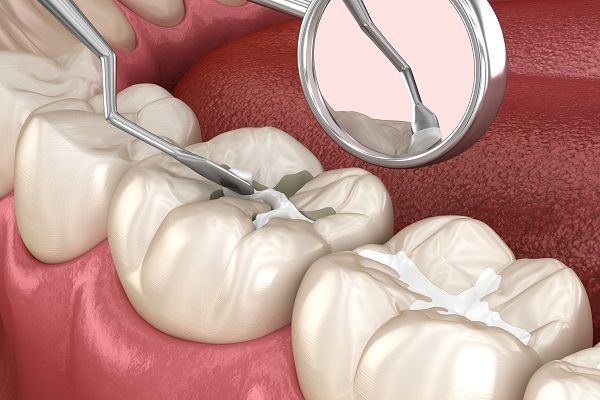Just hearing the words “root canal” may be enough to trigger a sense of pain. No matter whether you’ve had a less-than-positive experience with a root canal or know others who have, this common dental procedure is not as stressful as it may seem when performed by a skilled and experienced dentist or endodontist. From medical advancements in root canal treatment to improved training of endodontists over the years, getting a root canal has become a routine procedure resulting in lasting relief.
Has your dentist recently recommended a root canal procedure? 24/7 Local Dentist is here to provide answers to your questions and ease your anxieties. Keep reading to learn more about the outdated bad reputation of root canals, how to prepare for a root canal, what to expect during a root canal procedure, and root canal aftercare steps!
Handling the Bad Reputation of Root Canals
A root canal is generally performed when a tooth develops a root canal infection, which develops either as decay spreads to the inner pulp of the root or when a bacterial infection develops inside the tooth or at its root tip. Signs of a root canal infection include severe toothache, tooth sensitivity to both hot and cold temperatures, swollen and tender gums, and the development of abscesses on the gums. Root canal procedures — also known as endodontic therapy — stop infection and pain while preserving the tooth to prevent extraction. Once treated, the tooth retains its function and appearance.
Not so long ago, a root canal was a lengthy, uncomfortable procedure that sometimes necessitated two visits to the endodontist. Today, when performed by an endodontist equipped with up-to-date technology, a root canal is a quick, painless procedure that — depending upon your individual situation — may be performed during a single appointment. If you have a bad memory of a root canal many years ago, be assured that there is no reason to dread undergoing one now!
The American Association of Endodontists (AAE) reported on a 2019 study by the University of Adelaide on modern root canal treatment, authored by Dr. Tallen Chew and published in the Journal Endodontics (JOE) . The JOE study concluded that root canal treatments are currently perceived as no worse than other dental procedures, with more than 25 million root canals treated every year by dentists and endodontists.
So, what exactly is an endodontist? An endodontist is a dentist who specializes in diagnosing tooth pain, treating it performing root canal treatment. Endodontists must receive two or more years of advanced training after completing dental school in order to further develop their knowledge, skills, and use of advanced root canal treatment technology. You can rest assured knowing your root canal treatment is in qualified and experienced hands.
As Dr. Keith V. Krell, President of the AAE stated, “Modern root canal treatment helps save patients’ teeth, and no one is better equipped or trained to help a patient than an endodontist. Have no fear!”
Preparing for a Root Canal
While dental pain is often associated with a root canal infection and the necessity to undergo root canal treatment, some patients may not feel pain related to the infection if the tooth nerve has died. However, your dentist will be the one to decide whether you need a root canal in order to stop the infection — also known as irreversible pulpitis — and prevent tooth loss.
There are certain tests your dentist or endodontist may perform to confirm that a root canal is an appropriate treatment. Common diagnostic procedures include X-rays, a cone-beam CT (CBCT), and a pulp vitality test . Most pulp tests involve placing a cold stimulus on the tooth to check for a healthy response.
Patients may be prescribed antibiotics prior to treatment if they are immune-compromised, or have one of the following conditions:
- Fever
- Rapid onset infection
- Tooth abscess
- Systemic (entire body) or local infection
It’s important to be prepared and know what to expect before arriving at your appointment. This can help ease some of your anxieties, as well as give you an opportunity to ask your dentist or endodontist any questions you may have about the procedure.
Some questions you may want to ask before to consenting to root canal treatment include:
- Could your tooth possibly recover, or is the root canal completely necessary?
- How was it determined that your tooth has irreversible pulpitis, and why did the pulp itself die or become infected?
- What would happen if the root canal procedure was not performed?
- Would it be better to forego the root canal treatment and go straight to extraction and dental implant surgery?
- Could the root canal infection spread to the bone or neighboring teeth?
- How confident does the dentist and/or endodontist feel about the likely success of root canal treatment?
While you want to be sure a root canal is an appropriate treatment, the risk of infection if left untreated is extremely serious. If your dentist recommends having a root canal, you should proceed, or schedule an appointment for extraction. Doing nothing could pose a risk to your life as the infection eventually spreads throughout your body.

What to Expect During the Root Canal
So, what about the root canal procedure itself? There are seven core steps to root canal treatment. Knowing the steps will help you be more aware of what is happening during the procedure, especially for knowing when it’s almost over. The best news is that you will not feel any pain during the procedure itself, and you may not even feel anything at all! As is the case with most dental and medical procedures, however, you can expect some minor soreness and pain during the recovery process (more on that next).
Here are the primary steps of a root canal procedure:
- Another physical exam and set of X-rays — While your endodontist or dentist already conducted a physical exam and took X-rays, doing so once more just before the procedure helps ensure all the correct necessary preparations have been made.
- Oral numbing — Local anesthesia will be used to numb the infected tooth and the area around it. Sedation is not a requirement for root canals, but you may be able to request it from your dentist prior to the procedure to help with anxiety. You can read more about sedation on our blog post, “ What to Expect with IV Sedation .”
- Rubber dam placement — To prevent further bacteria from reaching the tooth, a rubber dam (typically a latex sheet), will be placed over your mouth. Medications used inside the tooth will also be prevented by the dam from being swallowed.
- Tooth opening — Your dentist or endodontist will then drill open the top of the tooth.
- Removal, cleaning, and shaping — The infected pulp is finally removed using very precise tools, followed by the interior of the tooth being cleaned out and shaped.
- Tooth irrigation — The now-empty pulp chambers are then irrigated with water. This may also be followed by an antibacterial agent.
- Filling and sealing — Once the interior of the tooth is dry, the tooth will be filled and sealed. The filling is generally a combination of gutta-percha and rubber cement, although posts can also be included as needed. You will also receive a temporary filling to top the tooth until you later receive a permanent crown.
Root Canal Aftercare
Expect to go back to the dentist one to four weeks after your root canal procedure to receive a filling or get an impression for a crown. The tooth will need a crown because it is no longer “alive,” and therefore will soon become brittle and prone to breaking. A crown will provide a strong structure as durable as that of the tooth itself before the root canal procedure.
It’s important to be thorough in your root canal treatment aftercare , as directed by your dentist or endodontist. Some mild soreness and sensitivity in your tooth can be expected for several days following root canal treatment. To aid with this, your dentist may recommend rinsing your mouth with warm saltwater and/or taking over-the-counter pain medication. More serious pain and pain lasting longer than a few days could indicate something more abnormal, such as root canal failure, and you should contact your dentist immediately.
Caring for your mouth after a root canal procedure also includes consuming soft foods, avoiding very hot or cold food items/beverages, avoiding hard and sticky foods, avoiding alcohol, and not chewing or biting with the treated tooth until it has received a permanent crown. Of course, you will also want to resume brushing and flossing your teeth, being careful not to use too much force around the treated tooth when doing so.
Finally, expect to see your dentist six months after your root canal procedure for a follow-up exam, followed by a check-up on the tooth every three to five years.
Stress-Free Root Canal
A root canal procedure should not be a stressful dental treatment, and 24/7 Local Dentist is committed to ensuring all treatment at our Chicago dental practice is always stress-free. From our spa-like facility to the care provided by our extremely skilled and trained dental staff , you will feel at home with us. We provide endodontic services including root canal treatment , as well as periodontal services and many other dental services .










